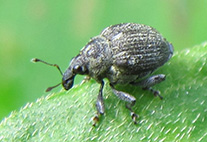Abstract
Silk production and spinning are the most prominent characteristics of spiders (Araneae). The high diversity of web architectures correlates both with preying behaviors and with the ultra-structure of the silk threads that compose the webs, which in turn have a corresponding diversity of silk gland spigot complements. The details of web construction, thread structure, and gland spigot morphology have proven extremely informative for phylogenetic hypotheses (e.g., Eberhard 1982, 1988; Eberhard & Pereira 1993; Coddington 1989; Griswold et al. 2005; Hormiga et al. 1995; Lopardo & Ramírez 2007; Platnick et al. 1991; Agnarsson & Blackledge 2009; Eberhard 2010), and a fascinating system to study spider diversification and evolutionary trends (e.g., Opell 1996; Opell & Bond 2000; Blackledge et al. 2009, 2012; Dimitrov et al. 2012).

